Q: Exactly how do these plants capture prey? Answer #3--lobster pot traps
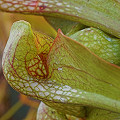 Sarracenia
Sarracenia
psittacina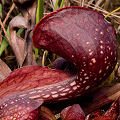 Sarracenia
Sarracenia
psittacina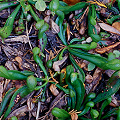 Darlingtonia
Darlingtonia
californica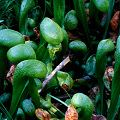 Darlingtonia
Darlingtonia
californica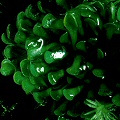 Genlisea
Genlisea
aurea
A: Lobster pot traps (sometimes called eel traps) are similar to pitfall traps in that the trap itself is a chamber of death
from which the prey cannot escape. However, there is a key difference between the two strategies.
In a pitfall trap, the creature merely has to venture past the edge of the pitcher mouth. The sheer walls ensures that once
that momentary criterion is fulfilled, the prey tumbles under the force of gravity to its death.
Meanwhile in a lobster pot, the trapping process is longer because instead of using gravity, the prey is ushered to its doom
by its own power. In effect, the prey knowingly walks into the deathtrap, by choice.
The soul of the strategy is trickery. Prey are encouraged to enter under the promise that they are finding their way
towards food. A chamber mouth is willingly entered because the suggestion of riches of nectar just beyond are so strong.
In the aquatic lobster pot plant Genlisea, we are not sure the nature of the attractant.
In the lobster pot traps Sarracenia psittacina and Darlingtonia californica,
special structures increase the chances prey will enter the trap. In the first case, a greatly enlarged ala directs prey towards
the pitcher opening; in the second case, fanglike appendages covered with nectar glands entice prey to forage near the entry to the
internal pitcher chamber. In both of these species, the inflated pitcher chamber is festooned with transparent or white windows
that help illuminate the entry chamber, encouraging day-foraging bugs to enter.
Darlingtonia californica is especially interesting in that it combines both the lobster pot trap to
entice prey to a point of no return, and then a pitfall trap to complete the job. The pitfall trapping plants
Sarracenia minor and Nepenthes aristolochioides similarly mix such
approaches to a lesser degree.
A study of bladder structure suggests that Utricularia multifida bladders may be passive
"channel traps", i.e., lobster pots.
From an evolutionary perspective, terrestrial lobster pot traps are really just an extension of the pitfall trap, and it is not
at all
difficult to see how they evolved. The origins of aquatic lobster pot traps are more speculative. They might have evolved
from a much more simplified, passive pouch. Unfortunately, we have no fossil record of these soft, delicate
plants, so this is but guesswork.
Page citations: Lloyd, F.E. 1942; Reifenrath, K. et al. 2006;
Rice, B.A. 2006a, 2007a.